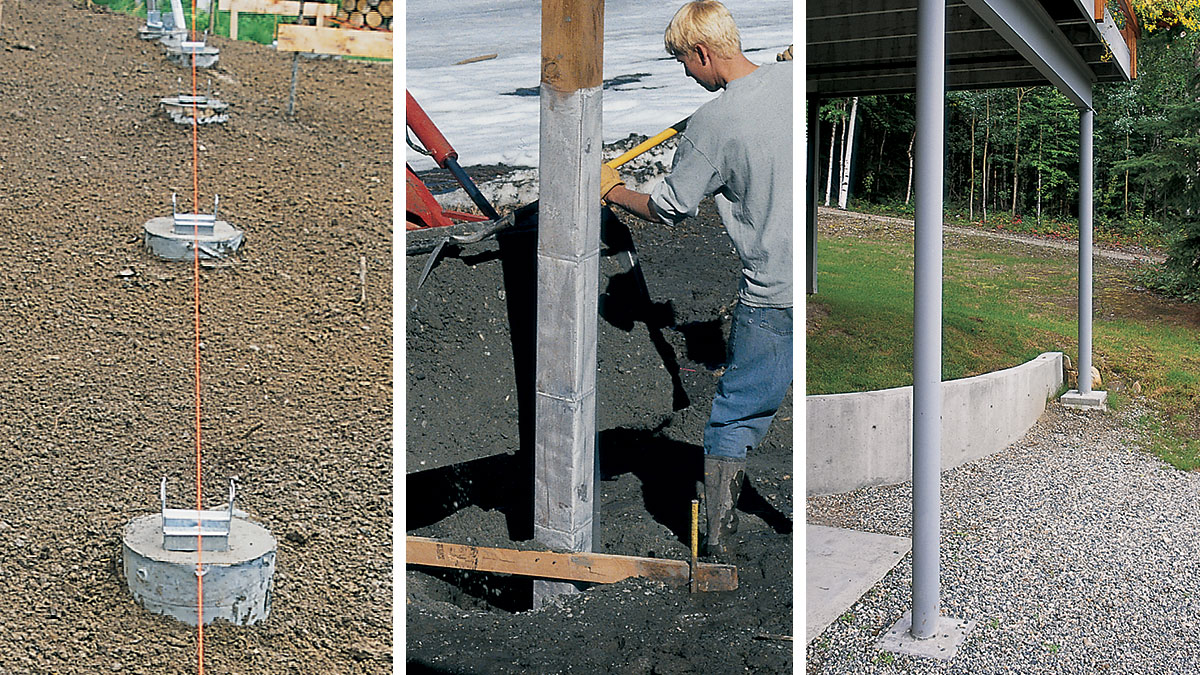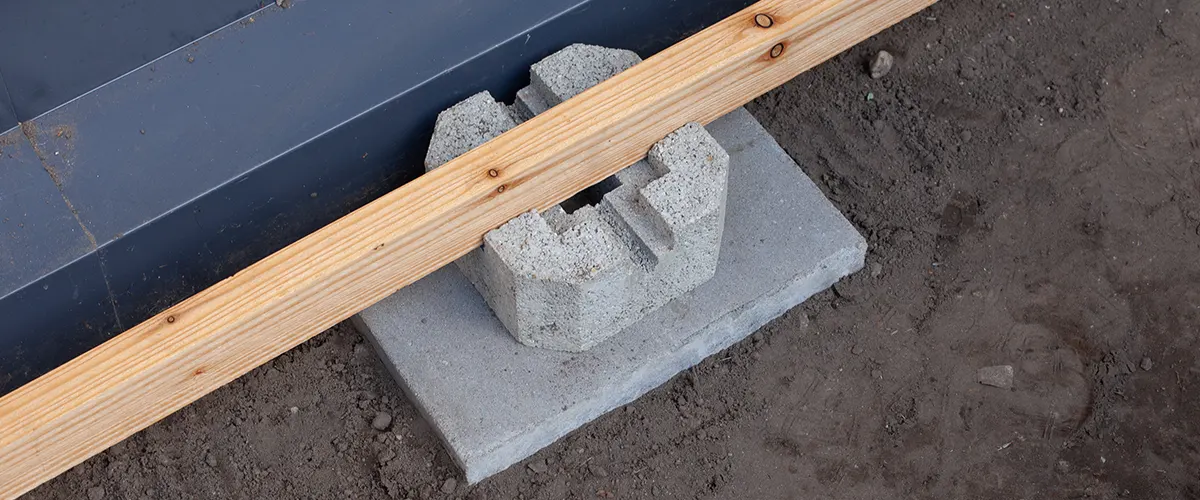Improve Your Deck's Stability With Proper Deck Ground: Ensure Long-Lasting Resilience and Safety
When it involves constructing a deck, guaranteeing its security and long life is of utmost value. One essential factor that frequently gets neglected is the correct installation of deck grounds. These grounds work as the foundation of your deck, providing the necessary assistance and security to withstand the examination of time. By recognizing the effect of dirt problems and picking the ideal materials, you can boost your deck's stability and guarantee its durable longevity and safety. Just how specifically do you go around accomplishing this? In this conversation, we will discover the significance of correct deck footing, guide you through the step-by-step process of setup, and highlight the value of regular maintenance to preserve your deck's stability.
Why Correct Deck Footing Issues
Proper deck ground is essential for making sure the security and long-term durability of any kind of deck framework. The deck ground, or foundation, works as the anchor factor for the entire deck, sustaining the weight of the framework and transferring it to the ground listed below - Deck Footings. Without a strong ground, a deck can end up being unpredictable, causing architectural failing and prospective safety threats

Furthermore, proper deck footing aids to safeguard against wetness damage. Dampness can seep into the ground and deteriorate the structure, resulting in decomposing or degeneration. By utilizing ideal materials and methods for the footing, such as helical piles or concrete piers, the deck can be raised in the air, reducing call with wetness and extending its life expectancy.
Comprehending the Influence of Dirt Conditions
The stability and toughness of a deck structure can be considerably influenced by the soil conditions in which it is constructed. Comprehending the impact of soil conditions is crucial for guaranteeing the durable longevity and safety of a deck. Different types of dirt have varying load-bearing abilities, water drainage capacities, and expansion and contraction residential properties, which can all impact the security of the deck.
One important aspect to consider is the dirt's bearing capacity, which describes its capacity to sustain the weight of the deck and any type of additional lots. Dirts with high bearing abilities, such as compressed gravel or clay, are optimal for sustaining hefty frameworks like decks. On the other hand, dirts with low bearing abilities, such as loose sand or soft clay, might need extra procedures to improve stability, such as deep footings or dirt stablizing strategies.

Furthermore, the dirt's propensity to broaden and get with adjustments in wetness material can impact the security of the deck. Dirts with high clay content are vulnerable to significant expansion and contraction, which can cause moving and clearing up of the deck structure. Correct measures, such as installing wetness barriers or using different foundation systems, may be required to mitigate the results of dirt movement.
Picking the Right Footing Materials
What elements should be thought about when choosing the appropriate ground products for a deck? Choosing the best ground materials is important for making sure the security and long life of a deck. Numerous factors require to be thought about when making this decision.
Firstly, the kind of dirt in the area plays click here for info an essential function in establishing the ideal footing products. Different dirts have varying load-bearing capabilities, so it is very important to select materials that can properly support the weight of the deck and any kind of possible loads it might bear.
Secondly, the climate and weather condition problems of the region need to be considered. In areas with rough winters or high degrees of dampness, footing products that are resistant to corrosion and degeneration, such as treated or concrete wood, are suggested. These products are a lot more durable and much less susceptible to harm from freezing temperatures, wetness, and parasites.
In addition, the dimension and height of the deck likewise influence the selection of footing products. Larger and taller decks require more considerable grounds to ensure security and stop shifting or sinking. In such situations, products like helical piers or concrete grounds may be preferable.
Finally, budget plan factors to consider must not be overlooked. While some products might supply superior resilience and performance, they might likewise come with a greater price tag. When picking the proper ground products for a deck., it is vital to strike a balance in between expense and quality.
Step-by-Step Guide to Putting Up Deck Footings
When installing deck grounds, it is necessary to comply with a step-by-step overview to ensure stability and sturdiness. By following these steps, you can make certain that your deck will certainly be able to withstand the examination of time and supply a risk-free and delightful outside room for several years ahead.
The very first step in mounting deck grounds is to identify the location and design of your deck. This includes measuring and noting the area where the grounds will be placed. It is essential to guarantee that the grounds are evenly spaced and aligned with the deck's layout.
Following, you will need to dig the holes for the footings. The deepness and diameter of the openings will depend upon the size and weight of your deck. It is critical to dig the openings deep sufficient to get to listed below the frost line to protect against frost heave.
As soon as the holes are dug, you can begin putting the concrete grounds. It is suggested to make use of a pre-mixed concrete mix for this action. Fill the openings with concrete, making certain that it is level and smooth. Use a post degree to make sure that the footings are plumb.
After the grounds have been poured, allow the concrete to heal for at least 2 days prior to waging the deck setup. This will make sure that the footings have hardened and prepare to sustain the weight of the deck.
Normal Maintenance to Maintain Deck Stability
To keep the security of your visit this page deck, normal upkeep is essential. By executing a routine upkeep timetable, you can ensure that your deck remains risk-free, durable, and aesthetically appealing.
Cleaning your deck regularly is one more essential maintenance task. In addition, on a regular basis using a safety sealant can assist avoid moisture damage and extend the life of your deck.
In addition to these regular maintenance jobs, it is likewise suggested to conduct an extensive assessment of the deck's structural components a minimum of yearly. This consists of examining the problem of the footings, messages, light beams, and joists. Any indicators of degeneration or weakness should be addressed promptly to ensure the continued security and security of the deck.
Conclusion
In final thought, correct deck footing is crucial for making sure the lasting resilience and my sources safety and security of your deck. By adhering to a detailed guide to setting up deck footings and consistently keeping them, you can improve your deck's security.
In this discussion, we will certainly discover the value of correct deck ground, guide you through the detailed process of setup, and highlight the significance of normal maintenance to protect your deck's stability.
Proper deck ground is essential for ensuring the stability and long-lasting longevity of any kind of deck framework.One of the key factors why appropriate deck ground issues is to stop the deck from moving or sinking over time (Deck Footings).In final thought, proper deck ground is important for ensuring the durable toughness and security of your deck. By complying with a step-by-step guide to setting up deck footings and routinely preserving them, you can enhance your deck's security